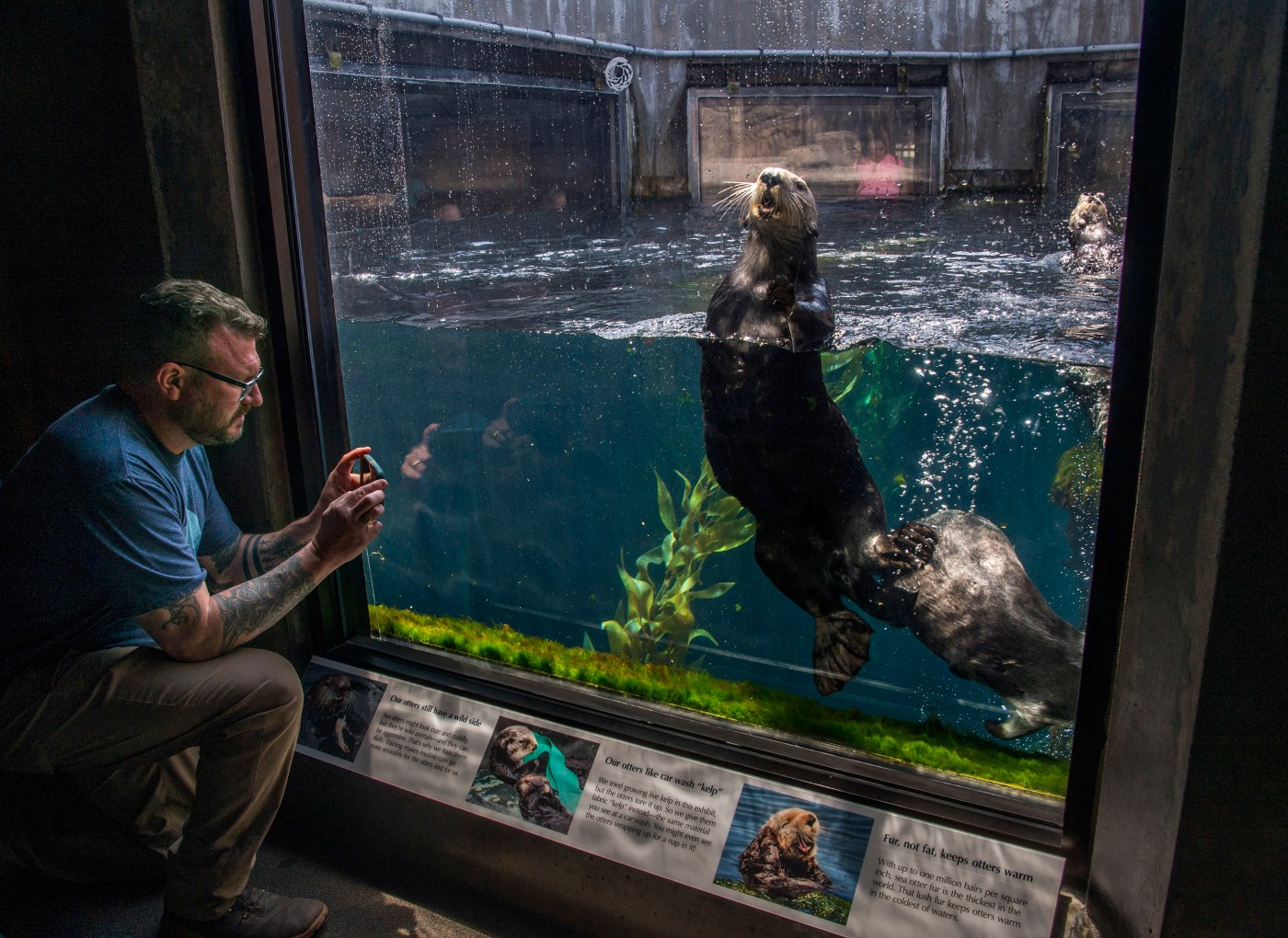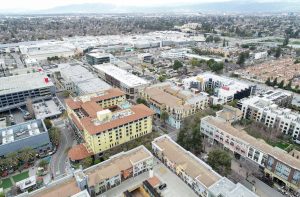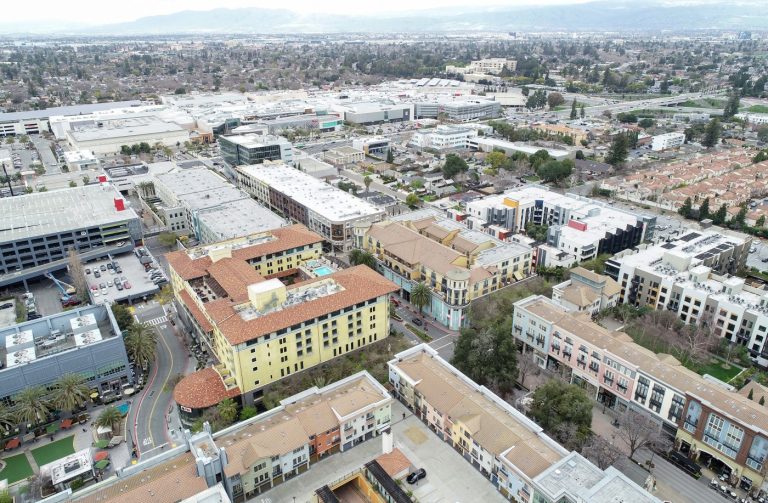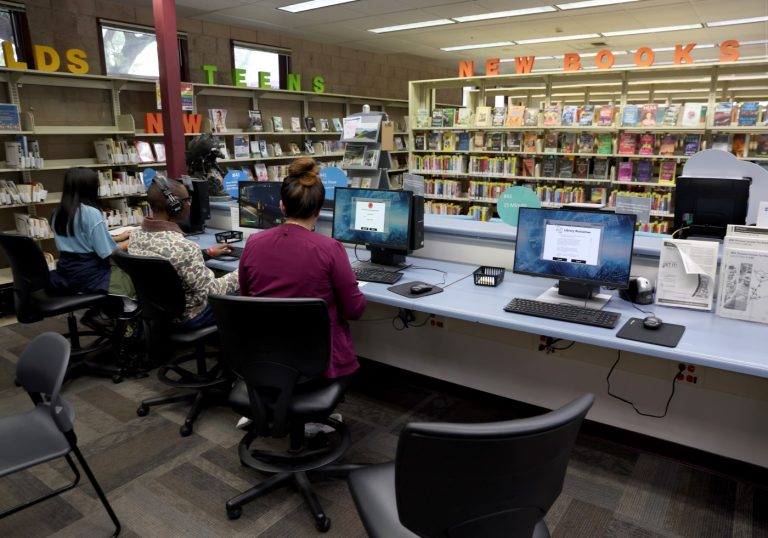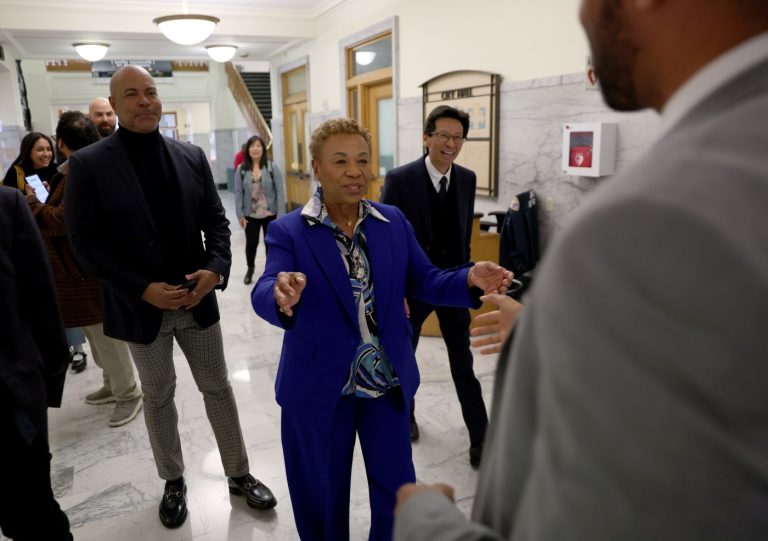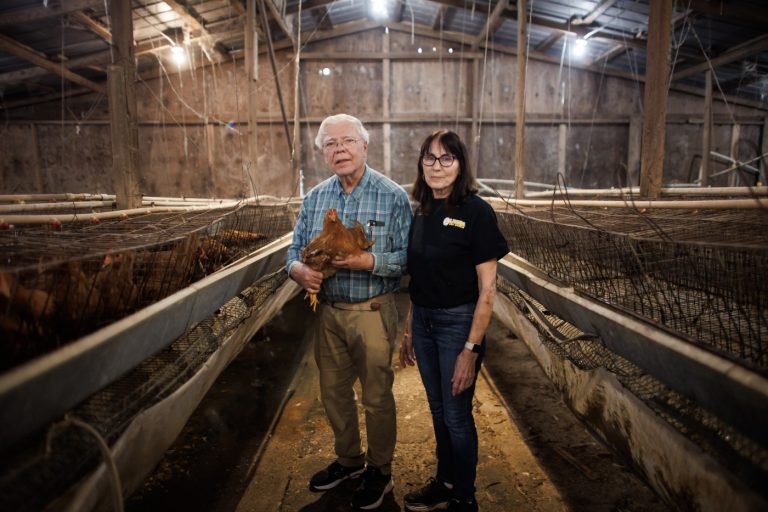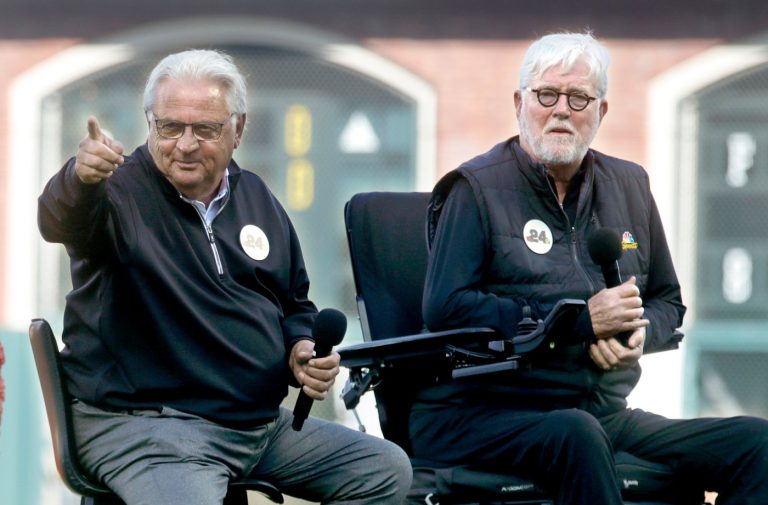The Monterey Bay Aquarium is world famous for its kelp forests, schools of glimmering fish, penguins, sea turtles and frolicking otters. Nearly 2 million people visit each year. But not everyone can afford to go.
Hoping to make the Cannery Row landmark more accessible to low-income families, the aquarium has announced that next Monday it will begin allowing free admission to anyone who receives federal food assistance benefits through the Supplemental Nutrition Assistance Program (SNAP), which is known as CalFresh in California.
People enrolled in the program receive money to help buy groceries using an “electronic benefits transfer” or EBT card. If they present that card and a photo ID at the aquarium’s ticket counter they will be allowed free entry for themselves and up to three other people, any day of the year.
“Our mission is to inspire conservation of the oceans. But we can’t achieve that if we don’t have everybody at the table,” said Kera Abraham Panni, a senior community engagement manager at the aquarium. “We want to make sure everybody has access to the joy and wonder that the ocean provides.”
The aquarium is the latest of more than 1,300 zoos, aquariums and museums around the United States to embrace the strategy of free or extremely low-cost admission, an acknowledgement that museums need to do more so they don’t end up serving only the well-off in society.
Regular admission to the Monterey Bay Aquarium is $59.95 for adults, $49.95 for teens and seniors over 70, and $44.95 for kids ages 5 to 12 — $210 for a family of four.
A national coalition, called “Museums for All,” has helped more than 9.5 million people in the United States on food assistance to receive free, or very low-priced admission for $3 or less — and includes a wide variety of landmarks, from the Baseball Hall of Fame to Colonial Williamsburg to the Shedd Aquarium in Chicago.
In the Bay Area, many leading museums and other institutions are already participating, including the California Academy of Sciences and the Exploratorium in San Francisco, the Oakland Zoo and the Chabot Space & Science Center in Oakland, and the Children’s Discovery Museum and Tech Interactive in San Jose.
Museums don’t get reimbursed by the government for providing free admission, said said Brendan Cartright, a special program manager for the Association of Children’s Museums, which administers and tracks the voluntary campaign.
Although, in some cases, foundations and large private donors will help make up the cost difference to aquariums, zoos, and museums who participate in the Museums for All program.
Most museums are nonprofit institutions that earn much of their revenue through memberships and ticket sales. About one third of those participating in the Museums for All program offer completely free admission, while another third charge $3, and another third charge $1 or $2, Cartright said.
“Sometimes people arrive at a museum, zoo, or aquarium and say ‘we aren’t going to be able to afford this,’” he said. “And the person at the desk will say ‘do you have a SNAP EBT card?’ And they’ll say yes, they’ll show it, and then they’re allowed to go in.”
Museums aren’t just entertainment, he noted. Seeing a Van Gogh painting in person, or Jackie Robinson’s uniform, or an endangered panda can be life-changing. It can inspire a child to study science, or art, or to see the world in a completely different way.
“Costs go up over time, and admission prices need to go up,” he said. “But museums serve the community. When prices go up they want to have something in place to make sure visitors aren’t being left behind.”
The Monterey Bay Aquarium’s Kelp Forest exhibit in Monterey, Calif., on Tuesday, May 30, 2023. (Doug Duran/Bay Area News Group)
“We are a nonprofit organization with an ocean conservation mission,” Panni said. “We understand inflation is hitting everybody and it can be a stretch economically for folks to visit cultural institutions like the aquarium. We need to balance that against our own costs. The revenues from ticket sales and membership pay for animal care, the food the animals eat, our staff and maintenance.”
In some cases, foundations and large private donors will help make up the cost difference to aquariums, zoos, and museums who participate in the Museums for All program.
Some facilities are going farther.
This year, the California Academy of Sciences began accepting EBT cards in its cafeteria. The famed natural history museum, located in Golden Gate Park, has a tyrannosaurus rex skeleton, an aquarium, a planetarium, and an indoor rainforest.
“If you come visit, you still have to have lunch with your kids,” said Jeanette Peach, a Cal Academy spokeswoman. “We want everybody to have the experience of staying the whole day and seeing everything.”
Last year, Cal Academy allowed 93,000 people — nearly 10% of its total visitation — into the museum for $3 each with an EBT card, or other benefit programs for low-income families, like a Medi-Cal card.
“Kids go home and talk to their friends about what they saw at the museum,” Peach said. “We saw that this spring with the corpse flower because kids love stinky things. We don’t want people to feel like ‘this is not for us.’ We want people to feel ‘this is for everyone,’ and everyone should have access to it.”
Visitors line up to see a corpse flower in bloom at the California Academy of Sciences & Osher Rainforest in San Francisco, Wednesday, Feb. 28, 2024. (AP Photo/Jeff Chiu)
